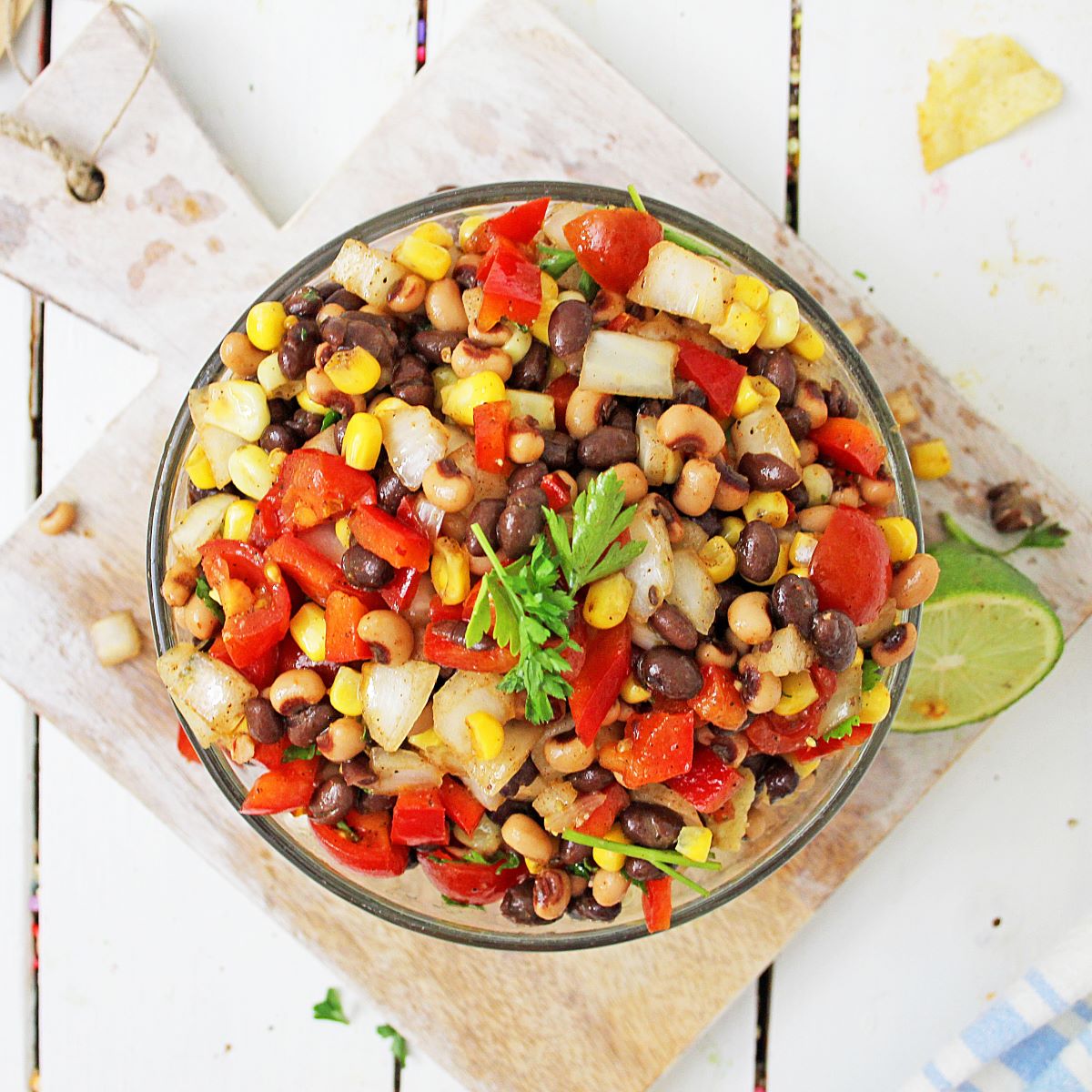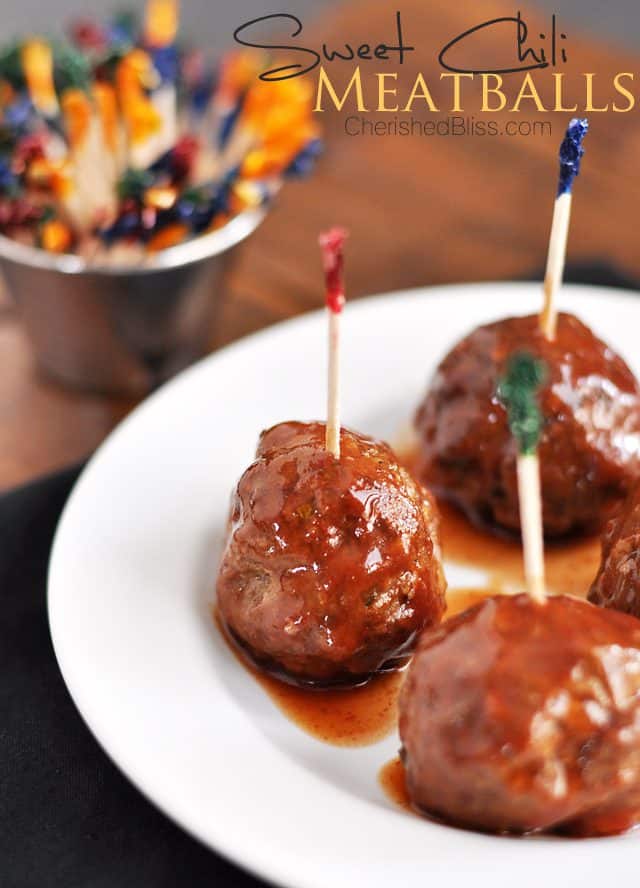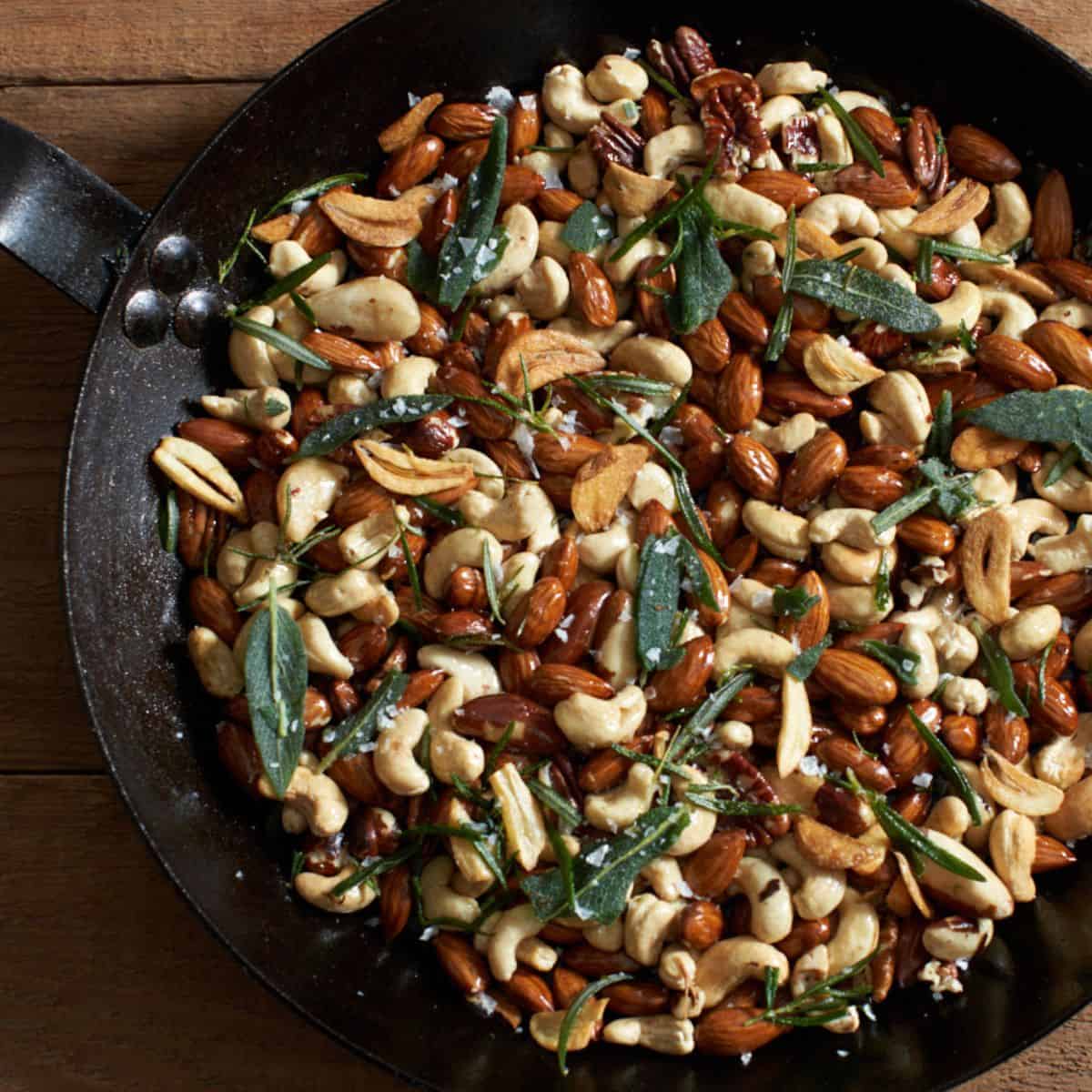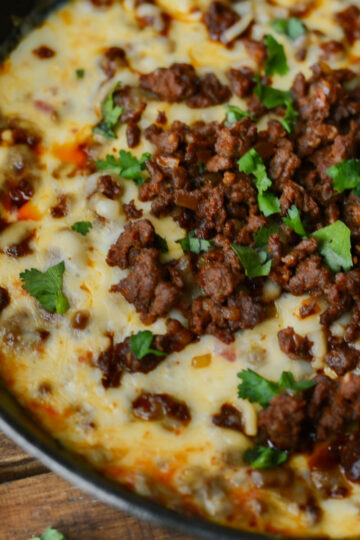From main dishes and sides to appetizers and my favorite sweet treat, these party buffet foods are perfect for every celebration.

Party Buffet Foods
Planning the best party buffet for your next gathering is all about variety and ease. Think mains, sides, appetizers, and a sweet treat to finish it off.
Keep it simple, flavorful, and fun so your guests can mingle, nibble, and enjoy every bite without any stress.
Party Food For A Crowd Pleasing Buffet
Start planning your next buffet with these beloved party staples. From cheesy baked mac and cheese to zesty deviled eggs and more. They’re easy crowd-pleasers that make your buffet feel warm and welcoming.
Southern Baked Mac and Cheese Recipe
This creamy Southern baked mac and cheese, with a secret ingredient, has always been a crowd favorite! It’s rich, cheesy, and hands-down the best baked mac and cheese you’ll ever make.
Spicy Caviar Dip
No buffet, superbowl party spread, or potluck dinner is complete with out this family favorite dip filled with vegetables and tangy dressing.
Sweet Chili Meatballs Recipe
These sweet chili meatballs aren’t just perfect for game day, they’re a hit at any party or gathering! Think about the holiday season, buffets or weekend get togethers.
How To Make Chocolate Covered Ritz Peanut Butter Crackers
Every buffet needs a handheld treat so anyone walking by can make a quick grab-and-go! Perfect dessert for the kids and adults alike.
Fig Appetizer Made With Goat Cheese And Prosciutto
This elegant fig appetizer with goat cheese, prosciutto, and fresh figs is perfect for holiday gatherings. Drizzled with real balsamic vinegar and maple syrup, every bite is the ideal blend of sweet, salty, and smoky flavors.
Oven Roasted Nuts with Rosemary, Sage, and Garlic
These oven-roasted nuts are bursting with flavor, thanks to the aromatic oil created from frying fresh sage, rosemary, and garlic. A quick, elegant snack that’s perfect for any cocktail party!
Cheesy Sausage Rotel Cups
These cheesy sausage Rotel cups are packed with bold flavor—spicy sausage, zesty Rotel tomatoes, Colby Jack, and creamy Velveeta all baked into crispy mini phyllo shells. A bite-sized appetizer that’s full of texture and irresistible heat!
Creamy Chicken Caesar Pasta Salad Recipe
This creamy Caesar pasta salad is a refreshing summer side, bursting with flavor and topped with tender grilled or rotisserie chicken for a quick and satisfying dish.
Crack Chicken Pinwheels Recipe
Whip up these irresistible crack chicken pinwheels for your next party, lunch, or snack! Loaded with a creamy, savory chicken and cheese filling, they’re guaranteed to be a hit with everyone.
Cream Cheese Sausage Balls
These cream cheese sausage balls are quick, easy, and absolutely irresistible! Bite-sized, cheesy, and packed with savory sausage flavor, they’re the perfect crowd-pleasing party snack.
How to Make Ham and Cheese Sliders
Sliders are the ultimate easy party food—perfect for game days or gatherings of any size! These ham and cheese sliders make delicious finger food and can be prepped ahead for stress-free entertaining.
Oven Roasted Turkey Breast with Garlic Butter
Serving roasted turkey breast is a great option for a party buffet. It delivers the tender, juicy white meat everyone loves without the hassle of cooking an entire bird.
Double Baked Mashed Potatoes Recipe
This twice-baked mashed potato casserole is packed with the comforting, creamy goodness of loaded potatoes, topped with sharp cheddar, crispy bacon, and a sprinkle of fresh green onions.
Deviled Eggs With Dill Pickle Relish
Classic deviled eggs get a tangy twist with zesty dill pickle relish. They are a staple at any buffet. Creamy, flavorful, and perfect for any gathering.
My Favorite Chocolate Brownies
Rich, fudgy, and utterly irresistible, these traditional chocolate brownies are made to serve a crowd! Perfectly chocolatey with a soft, gooey center and a slightly crisp top, they’re ideal for parties, potlucks, or any gathering where everyone craves a sweet treat.
SAVE THIS FOR LATER BY PINNING THE BELOW IMAGE





















